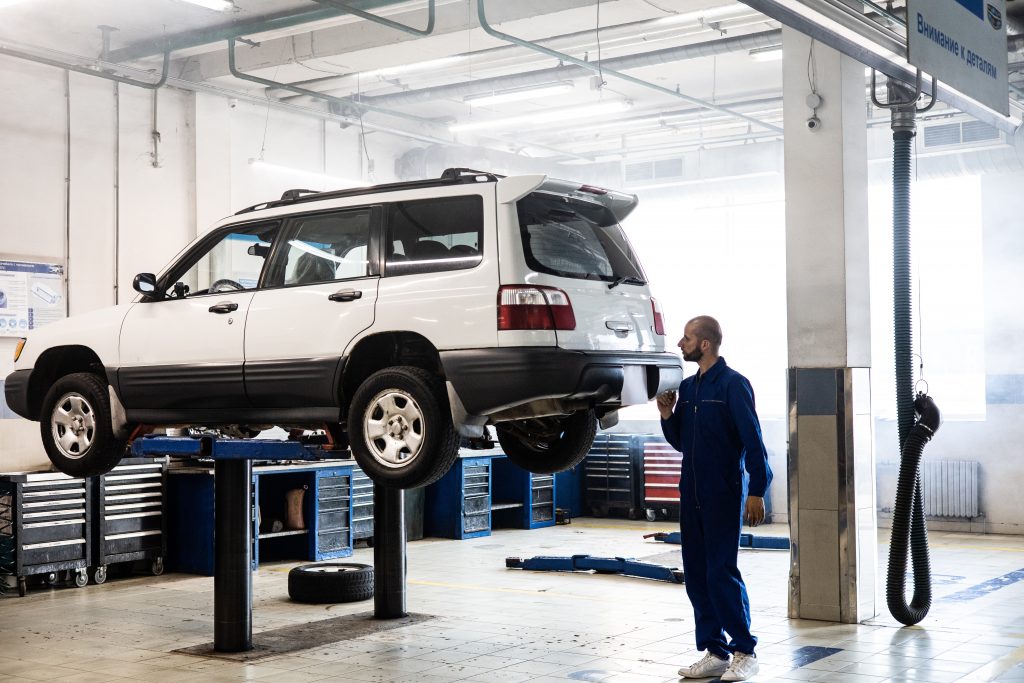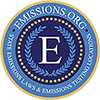Being a responsible vehicle owner means recognizing the significance of regular auto inspections in maintaining safety and roadworthiness.
These inspections uphold safety and emissions standards, fostering cleaner air and safer roads.
In this comprehensive guide, we’ll equip you with a detailed checklist to effectively prepare your vehicle for inspection, address any concerns you may have, and expertly navigate the inspection process.
Your commitment to these inspections not only ensures your own safety but also contributes to a healthier environment and enhanced road safety for all.

Understanding the Auto Inspection Process
Understanding the Auto Inspection Process is crucial to ensure your vehicle’s safety and environmental compliance.
Safety Inspection: This part looks at your car’s overall condition. It’s like a health check-up for your vehicle, making sure it’s safe for you and others on the road. They check things like lights, tires, brakes, and seatbelts.
Emissions Inspection: This is more about what comes out of your car’s tailpipe. They want to make sure your car isn’t polluting too much. They check for harmful stuff like carbon monoxide and hydrocarbons to keep our air cleaner.
Knowing these two types of inspections helps you understand what to expect when you take your car in. Safety inspections keep you safe, while emissions inspections help protect the environment by reducing air pollution.
The Complete Auto Inspection Checklist
Now, let’s dive into the detailed checklist for your auto inspection. This checklist covers all the essential components that inspectors will examine to ensure your vehicle is safe and environmentally friendly.
A. Exterior Inspection
In this section of our auto inspection checklist, we’ll delve into the details of inspecting your vehicle’s exterior for safety and compliance.
- Lights: Ensure that all lights on your vehicle are working correctly. This includes headlights, taillights, and brake lights. Properly functioning lights are crucial for visibility and safety on the road.
- Tires: Check the condition of your tires. Inspect the tread depth to make sure it meets safety standards. Also, verify that the tires are properly inflated. Well-maintained tires contribute to better traction and fuel efficiency.
- Mirrors: Examine your mirrors. They should be intact and positioned correctly to provide clear visibility. Properly adjusted mirrors help you see what’s happening around your vehicle.
- Windshield Wipers: Inspect your windshield wipers for wear and tear. Worn wipers can hinder visibility during rain or snow. Replace them if necessary for safer driving.
- Horn: Ensure that your vehicle’s horn functions properly. A working horn is an essential safety feature that alerts other drivers in case of emergencies.
B. Interior Inspection
Explore the interior inspection section of our checklist to learn how to maintain essential interior components for a safe and comfortable driving experience.
- Seatbelts: Confirm that seatbelts are in good condition and securely fasten. Seatbelts are a fundamental safety feature, and any damage or malfunction should be addressed promptly.
- Dashboard Lights and Gauges: Check that all dashboard lights and gauges are functioning correctly. These indicators provide essential information about your vehicle’s performance and potential issues.
- Steering Wheel and Gear Shift: Inspect the condition of your steering wheel and gear shift. They should be in good working order to ensure safe and smooth driving.
- Windows: Verify that the windows can open and close smoothly. Functional windows are necessary for ventilation and visibility.
C. Under the Hood Inspection
Discover the importance of examining what’s beneath the hood. We’ll cover crucial engine components and fluid levels for a reliable and efficient vehicle.
- Engine: Inspect the engine for visible leaks or damage. A well-maintained engine is essential for optimal vehicle performance and efficiency.
- Fluid Levels: Check engine oil, transmission fluid, brake fluid, and coolant levels. Proper fluid levels are crucial for engine health and preventing overheating or damage.
- Belts and Hoses: Ensure all belts and hoses are in good condition. Damaged or worn-out belts and hoses can lead to engine problems and breakdowns.
- Components: Look for any loose or disconnected components under the hood. Loose parts can affect the functioning of your vehicle and may pose safety risks.
- Battery: Confirm that your battery is securely fastened, and the terminals are clean. A well-maintained battery ensures reliable starts and electrical system performance.
D. Emissions Inspection
Learn about the emissions inspection, a key part of keeping your vehicle eco-friendly. We’ll delve into what it involves and why it matters.
- Check Engine Light: Verify that your Check Engine Light is off. A lit Check Engine Light may indicate emission issues that need attention.
- Exhaust System: Ensure your vehicle’s exhaust system is in good condition. A well-maintained exhaust system helps reduce harmful emissions.
- Emissions Test: Understand that the emissions test will involve measuring the levels of pollutants like carbon monoxide and hydrocarbons in your vehicle’s exhaust. Meeting emission standards is essential for environmental protection.
E. Test Drive Inspection
In this section, we’ll guide you through the test drive inspection, where you’ll evaluate your vehicle’s performance and safety on the road.
- Unusual Noises or Vibrations: During the test drive, pay attention to any unusual noises or vibrations. These may indicate underlying issues that need repair.
- Brakes and Suspension: Ensure your brakes and suspension system perform well. Responsive brakes and a stable suspension are critical for safe driving.
- Acceleration and Steering: Check for smooth acceleration and responsive steering. These factors contribute to the overall handling and safety of your vehicle.
F. Paperwork and Documentation
Discover the importance of proper record-keeping and documentation in the auto inspection process. Organized paperwork ensures a smooth inspection experience and compliance with regulations.
- Record Keeping: Keep all inspection and maintenance records organized. Proper record keeping helps you track your vehicle’s maintenance history and compliance with regulations.
- Documentation: Ensure you have your vehicle’s registration and insurance documentation readily available. These documents may be required during the inspection process.
- Identification: Have your driver’s license handy for identification purposes during the inspection.
By following this comprehensive checklist and preparing your vehicle accordingly, you’ll increase the likelihood of passing the inspection while ensuring your safety and environmental responsibility.
Finding an Auto Inspection Near You
Discovering a dependable inspection station nearby is the logical next step after understanding the auto inspection process. Learn practical ways to find one conveniently located in your vicinity.
- Ask for Recommendations: Seek recommendations from your trusted circle, including friends, family, or coworkers. People who have undergone inspections can offer valuable insights into their experiences with specific inspection stations. These firsthand accounts can help you make informed decisions.
- Certified Inspection Stations: Look for inspection stations that hold official certification and comply with state regulations. Certification is a mark of competence, indicating that the station meets the necessary standards for conducting inspections. Choosing a certified station increases the likelihood of a thorough and accurate inspection.
- Online Search: Conduct an online search using the keyword phrase “auto inspection near me.” Online resources, such as search engines and maps, often provide comprehensive lists of inspection stations in your vicinity. Additionally, you can find reviews and ratings from fellow vehicle owners, offering additional perspectives on the stations’ quality and reliability.
Choosing the right inspection station plays a pivotal role in ensuring a seamless and trustworthy inspection process. It not only safeguards your vehicle’s safety and compliance but also contributes to your peace of mind as a responsible vehicle owner.
Preparing Your Vehicle for Inspection
Preparing your vehicle for inspection is a crucial step that can make the difference between a hassle-free process and unexpected setbacks.
- Clean Your Vehicle: A clean car not only looks better but also suggests that it’s been well-maintained. When you clean both the exterior and interior of your vehicle, inspectors can more easily assess its condition. Remove clutter, vacuum the interior, and wash the exterior to present your vehicle at its best.
- Address Known Issues: If you’re aware of any problems or warning lights on your dashboard, it’s crucial not to ignore them. These issues can be indicators of underlying problems that need attention. Ignoring warning lights may lead to a failed inspection and further complications down the road.
- Consider a Pre-Inspection Check: Taking your vehicle to a trusted mechanic for a pre-inspection check can be a wise move. Mechanics possess the expertise to identify and address potential issues in advance. They can spot hidden problems that you might not be aware of, ensuring your vehicle is in top shape for inspection day.
It’s not just about compliance; it’s also about your safety on the road. A well-maintained vehicle not only passes inspections but also operates efficiently and reliably, contributing to your peace of mind as a responsible vehicle owner.
Taking the Road to Safety and Environmental Responsibility
Responsible vehicle ownership demands our commitment to safety, environmental responsibility, and adherence to regulations. By diligently following this comprehensive checklist and preparing your vehicle, you not only ensure a successful inspection but also actively contribute to cleaner air and safer roads for everyone.
Should you have inquiries or require assistance with your inspection, our team is readily available to support you. Feel free to reach out to us to discover how we can enhance your revenue through an efficient sales team. Your journey toward a safer and more eco-friendly vehicle begins right now, making a positive impact on both your life and the environment.

No comment yet, add your voice below!